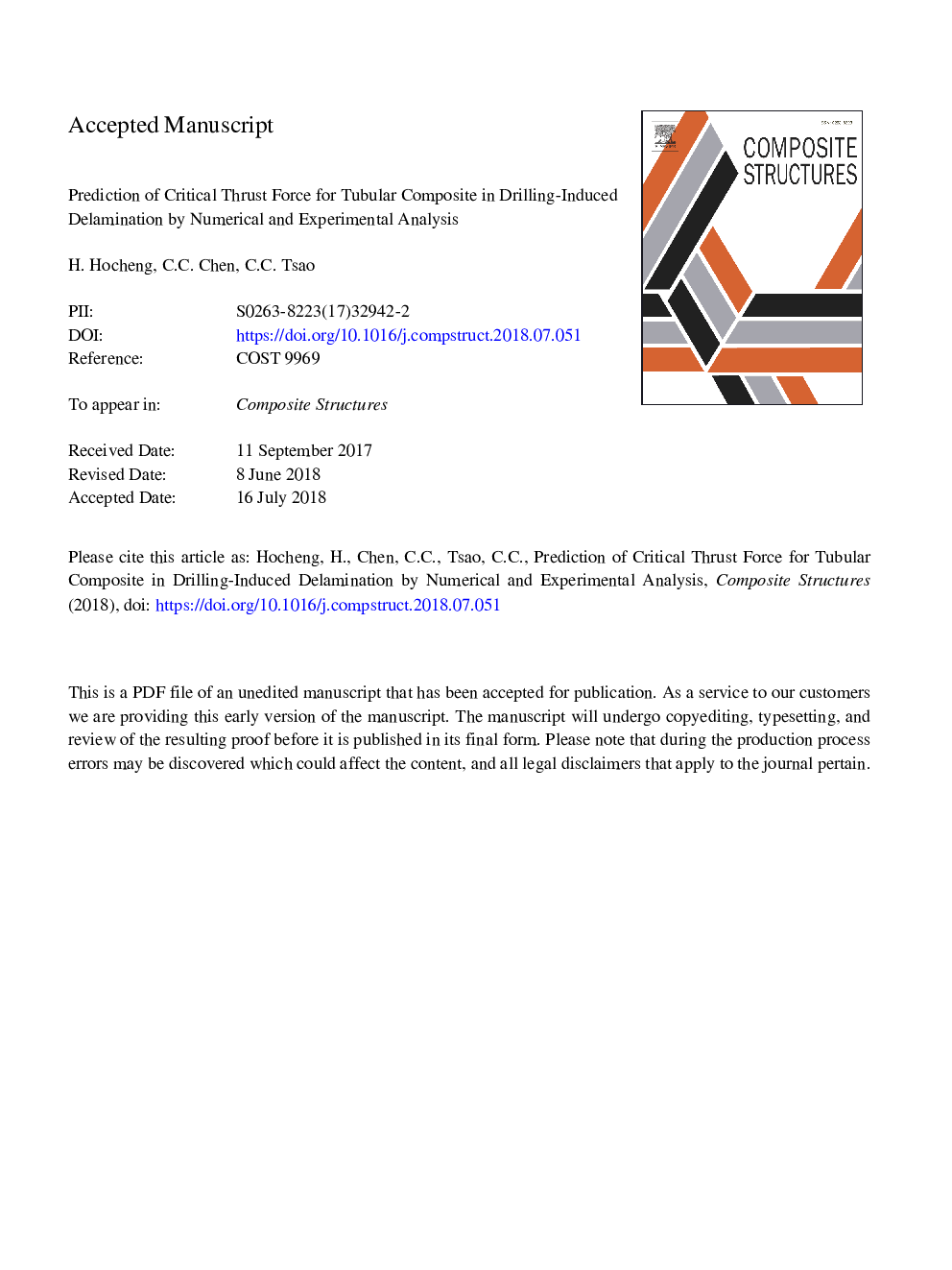| Article ID | Journal | Published Year | Pages | File Type |
|---|---|---|---|---|
| 6702838 | Composite Structures | 2018 | 22 Pages |
Abstract
Delamination is among the major concerns of the composite structures. Drilling often causes delamination damage at the exit of the hole when the drilling thrust is larger than the critical interlaminar strength of the composite laminates. The curved laminates endure even lower drilling thrust than the flat plates. The current study provides both numerical and experimental analysis to reveal the development of delamination initiation along with the drill movement downward. The last ply under the drill bends in response to the applied drilling thrust force until the threshold when the interlaminar strength cannot sustain and the crack starts to grow. Such onset of drilling-induced delamination can be clearly predicted by the current method. The calculated critical thrust force at the onset of delamination is compared with the experimental study and finds agreement. Knowing the material properties, the hole size and the tube diameter, one can predict the critical thrust force in drilling the composite tube and therefore able to select the proper drilling parameters including the feed rate and rotational speed for maximizing the production rate while avoiding the delamination damage during drilling a composite tube.
Related Topics
Physical Sciences and Engineering
Engineering
Civil and Structural Engineering
Authors
H. Hocheng, C.C. Chen, C.C. Tsao,
